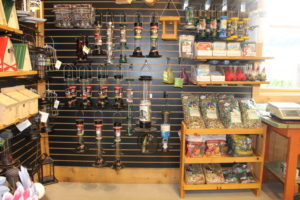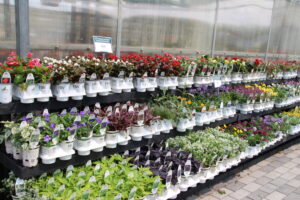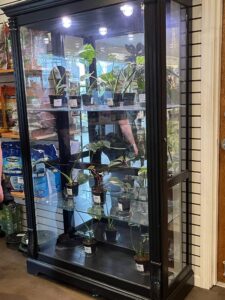Less Really Is More
In a recent issue of Big Grower Bottom Line, the esteemed Tim Hodson, editorial director of GPN, Big Grower and Lawn & Garden Retailer publications, wrote a story about research performed at the National Center for Biotechnology at the U.S. National Library of Medicine showing that a human’s attention span is down to 8 seconds (down from 12 seconds in 2000) which is lower than the 9-second attention span that a goldfish achieves. (OK, I accept that there’s enough science and technology to measure attention spans of a human, but a goldfish? I can only assume that some government agency had some extra research funds available and felt a crying need to study the minds of goldfish must be a critical function of national security that is far above my pay grade.)
These researchers defined attention span as the amount of concentrated time on a task without becoming distracted, and suggested that “external stimulation” such as the Internet and social media have contributed to this decrease by training the mind to think in small bytes. (The researchers didn’t mention what the contributing factors were for the attention span of the goldfish; guess that’s fodder for a new research project!)
Keep It Simple
The study Tim commented on reinforced some thoughts I’ve been having as I’ve visited and studied retailers this spring, including locally owned garden centers, big box stores, department and specialty stores and online platforms.
1. Consumers are expecting a consistent and transparent omni-channel experience, meaning they expect the same products, pricing, customer service and brand culture whether they shop in a retailer’s brick-and-mortar store, online (website and social media such as Facebook and Twitter) and in marketing communications. In too many cases in both national chains and the local retailer, these various channels aren’t integrated and delivering on the consumers’ expectations.
2. Though a human’s attention span may be 8 seconds, as a consumer walks the aisles of a store or scans a page on the Internet, you only have between 1.7 and 3.4 seconds to get them to stop and get more details on a product that attracts their attention.
3. Retailers of all shapes and sizes are utilizing more and more technology. Again, in too many cases, the application of these technologies are cumbersome for the consumer and they see no real benefit that will accrue to them; rather, they sense that the use of technology more benefits the retailer.
Back to the Basics
One common theme that threads through all of these observations is the need for simplicity in order to be effective. A recent quote I read states, “People in business have a tendency to get overly complicated equating complexity with value as if the harder it is to understand something, the more meaningful that something must be.”
Though it’s sometimes hard to discern when looking at some retailers, at its core the business of retail is pretty simple and basic: a location (physical or virtual) to provide consumers with products they desire, need and want. Anything that’s added to this equation must either enhance the purchase experience or add intrinsic value to the transaction, otherwise we’re either wasting resources (time, money and energy) or confusing the consumer, neither of which is good for business.
The process of Lean Flow is usually regarded as something that is exclusive to production or manufacturing, seeking opportunities to increase efficiency and reduce costs by simplifying activities and procedures. According to Wikipedia, the classic definition of Lean Flow is a practice that considers the expenditure of resources for any goal other than the creation of value for the end customer to be wasteful, and thus a target for elimination. Working from the perspective of the customer who consumes a product or service, “value” is defined as any action or process that a customer would be willing to pay for. Essentially, Lean is centered on preserving value with less work.
Viewed as a management philosophy, the thought process on which Lean is built has tremendous opportunity for simplifying the retail process by reviewing, streamlining or eliminating anything that doesn’t add value to your customer or that they wouldn’t be willing to pay for.
Lean Into It
The first step in this process is to identify who your core customer is, and then determine what their needs are. Once identified, take a look at your current processes through a Lean eye, looking to openly challenge the way things are being done and looking for new ways to deliver true value to your target customer. Critical to a positive Lean experience is recognizing from the onset that there are no sacred cows; everything is up for objective evaluation. With an open mind, I think you’d be very surprised at how much “waste” can be eliminated and your processes and activities simplified resulting in higher productivity and efficiencies, while at the same time, delivering improved value to your customers.
Another key benefit of simplification is that you’ll experience a higher degree of implementation and execution. By focusing on those fewer activities that deliver real customer value, you’ll have more time to make these happen. There really is something behind that old K.I.S.S. adage: Keep It Simple, Stupid!
And using this thought process, you’ll realize a better understanding of the basic elements and activities that are common across all of your platforms physical store, Internet and social media. Grasping these will allow you to build consistency of image, messaging and brand so that your customer isn’t confused any longer.
I think we all appreciate the reality that, while the Boomers and Gen-X’ers are extremely important to our businesses today, our future growth will be from the Millennial generation. And demographic research has shown that most Millennials are intimidated and confused about our products; we talk in terms they’re not familiar with, call plants and flowers by their Latin botanical names, incorrectly assume they are intuitively more knowledgeable about our products than they really are, and don’t provide them with the reasons they should be buying flowers, plants and trees or educating them about the benefits they’ll realize by using our products. As important as they’re going to be to our future, we’re not making it easy for them to start their lifelong relationship with plants and flowers. Just maybe, by getting back to basics and simplifying what we do and how we do it, we can begin to connect with the Millennials and start them off on their journey with us!
It’s difficult and expensive to communicate individually with each of our generational demographic customer segments. But I’ll wager that if we were to peel back the layers of complexity of each of the generational groups, we’d find a pretty large slice of commonality that they all share. And if we focused our efforts on delivering the value that is meaningful to them on these common needs, wants and desires, think of the potential we’ve just tapped into!
This concept of “less is more” isn’t new; it’s a concept that man (and retailers!) has struggled with for the ages. Like Einstein said, “If you can’t explain it to a 6 year old, you don’t understand it yourself.”

















 Videos
Videos





